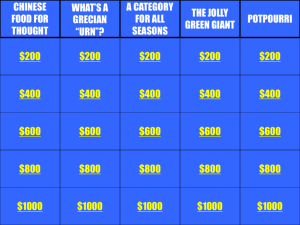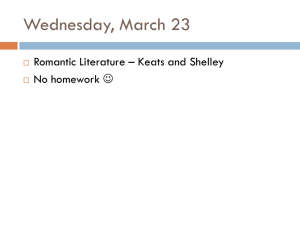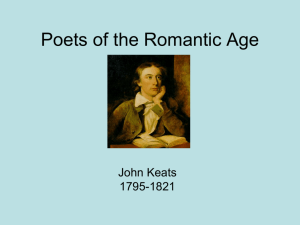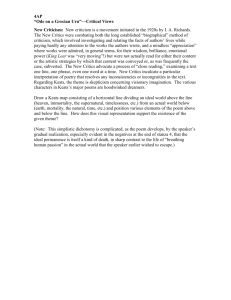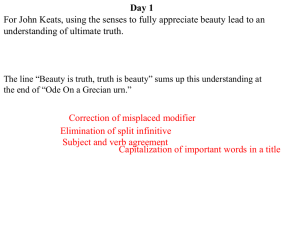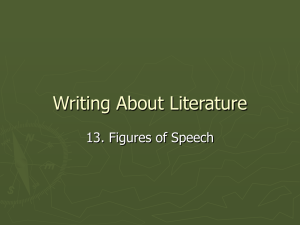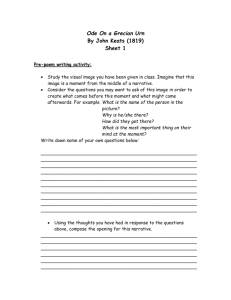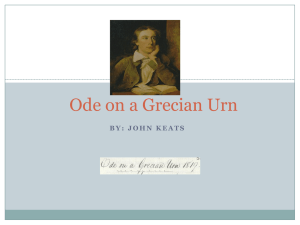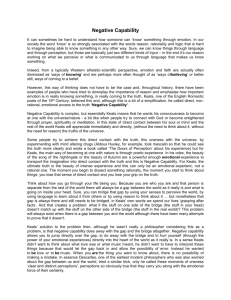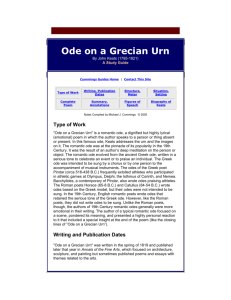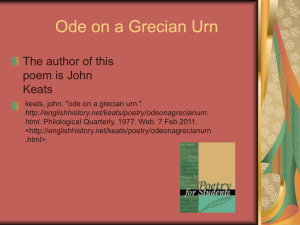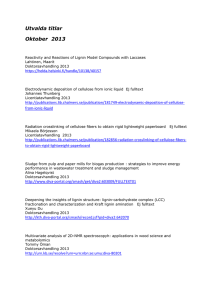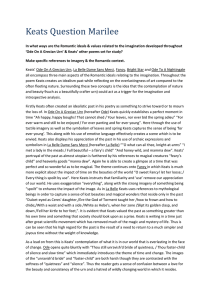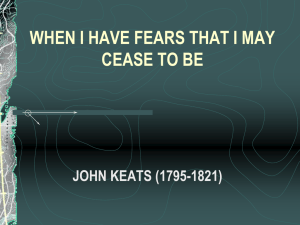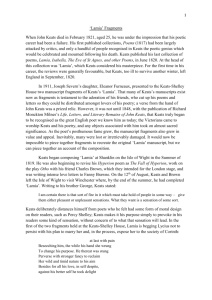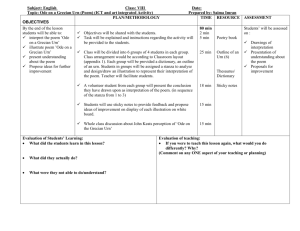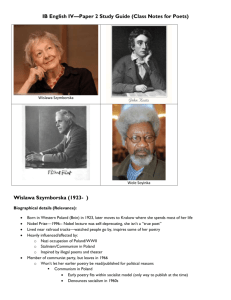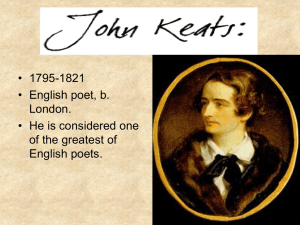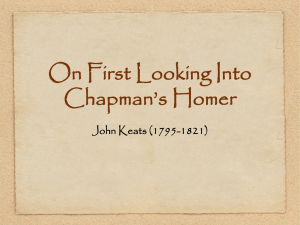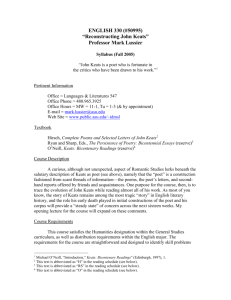Ode to a Grecian Urn Summary
advertisement
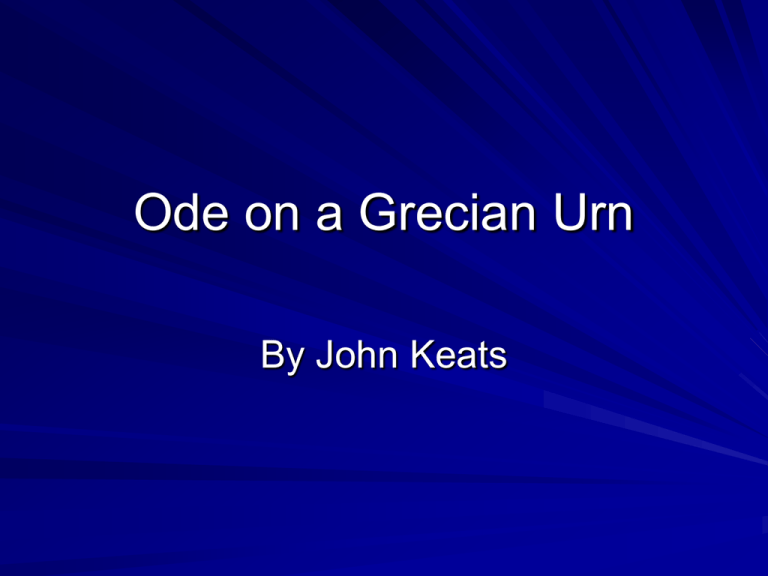
Ode on a Grecian Urn By John Keats John Keats John Keats was born on October 31, 1795. At the age of 8 his father died from a fractured skull after falling off a horse and his mother died from tuberculosis six years later. After their deaths Keats moved to Hampstead where he met Charles Brown who became a good friend and wrote Keats’ memoirs. In them Brown said that it was not until Keats read Edmund Spencer’s Faery Queen that he realized his own gift for poetry. John Keats While writing for magazines of his time his poems received constant critical attack, but his odes were considered his masterpieces. Keats is also know for his theory of “Negative Capability” which expresses the belief that great people have the ability to accept that not everything can be resolved. John Keats died on February 23, 1821 from tuberculosis at the age of 25 Ode on a Grecian Urn It was written in 1819 and published in 1820. It is one of Keats’ “Five Great Odes.” The ode follows a structural pattern with each stanza containing ten lines and ten syllables. The first four lines of each stanza are written in a Shakespearian based quatrain and the last six lines are a Miltonic based sestet. Literary Analysis In the first stanza the speaker addresses the urn in front of him by describing it as a historian. He admires the figure depicted on it and wonders what legend they depict and from where do they come from. In the second and third stanzas the speaker looks at a picture on the urn, which depicts a man playing a pipe while lying next to his lover under a group of trees. He believes that the man’s “unheard melodies” sound better then anything mortal because they are not affected by time. He also talks about how even though the man can’t kiss the woman the love between the two will last forever unlike mortal love. In the fourth stanza the speaker looks at another picture, which depicts a group of villagers taking a heifer to be sacrificed. The speaker asks himself where they are taking the heifer to be sacrificed and he imagines that their town will always remain silent and that they will never return. In the final stanza the speaker addresses the urn once again saying how long after his generation it will still remain a mystery to others. Theme The main theme of “Ode on a Grecian Urn is the idea that the figures in the urn are free from time and simultaneously frozen in time. The figures never have to confront aging and at the same time the man can never kiss the woman and the villagers can never return to their town. This theme creates a paradox and also enforces the theory of “negative capability.” The last two lines of the poem prove to be the most difficult to interpret, which is why they are place in quotations. Some believe that if it is the speaker is addressing the urn then he is indicating his awareness of its limitations. If it is the urn addressing the speaker, then it is basically saying that all human beings need to know is beauty and truth and how they are the same. Bibliography http://www.online-literature.com/keats/ http://www.bartleby.com/101/625.html http://en.wikipedia.org/wiki/Ode_on_a_Gre cian_Urn
